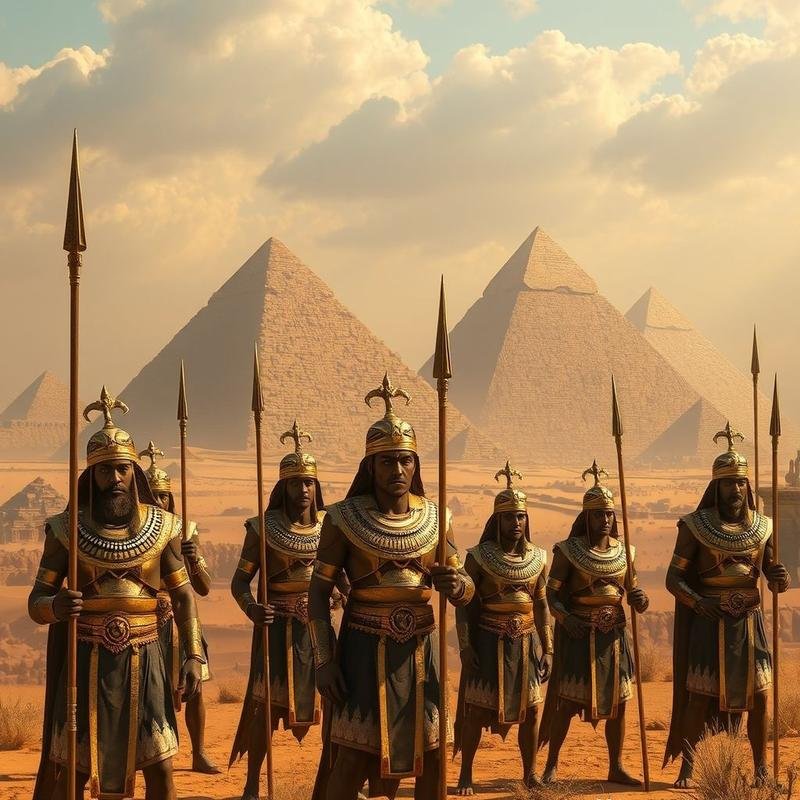Kush vs. Rome: Egypt’s Undocumented Power Struggle?

Kush vs. Rome: Ancient Power Struggle in Egypt
Explore the untold story of Kush’s challenge to Roman dominance in Egypt. Discover the power dynamics and vulnerabilities of both empires.
The Shadow of Rome: Egypt Under Roman Rule
For centuries, the fertile lands of Egypt, a cornerstone of the Fertile Crescent, sustained empires and attracted conquerors. In 30 BCE, following Cleopatra’s defeat, Egypt fell under Roman dominion, governed by a Prefect appointed from Rome. While not formally a personal fiefdom, Egypt was undeniably under Roman control, its strategic significance unparalleled. Control of the Nile River ensured control of the grain supply vital to Rome. Alexandria, a Mediterranean metropolis, flourished as a crucial port and a hub for Eastern trade, channeling spices, textiles, and exotic goods into the Roman Empire. However, even this stronghold of Roman power possessed vulnerabilities. The vast distances separating Roman legions along the Nile from the Empire’s core presented logistical challenges, and their reliance on river transport was susceptible to disruption. The underlying resentment of the Egyptian populace, burdened by taxation and Roman cultural dominance, posed a constant threat of internal revolt, a vulnerability the Kingdom of Kush would soon attempt to exploit.
The Kingdom of Kush: A Resurgent Power
Southward, beyond the Nile’s cataracts, lay the Kingdom of Kush, a civilization rooted in ancient Nubia, its history intertwined with Egypt’s for millennia. More than a neighbor, Kush was a rival, a conqueror, and a resurgent power. Its wealth stemmed from abundant resources – gold mines that fueled its economy and extensive iron deposits that forged its weaponry. The Kushites were skilled metallurgists, crafting tools and arms, a technological advantage often underestimated. Their culture, distinct yet influenced by Egypt, showcased a unique blend of traditions. They worshipped their own pantheon, constructed pyramids that some accounts suggest were steeper, and developed their own Meroitic script, a language still not fully deciphered. The secrets held within this undeciphered language remain unknown. Periods of Egyptian dominance saw Kush absorbed, only to rise again, most notably in the 8th century BCE when they conquered Egypt as the 25th Dynasty, ushering in a golden age before being driven south. This legacy of subjugation and supremacy shaped Kush’s relationship with Egypt, fostering resentment and ambition—a desire to reclaim lost glory and secure its survival against Rome.
Tensions Rise: Border Skirmishes and Trade Disputes
The shifting sands of the Egyptian borderlands concealed tensions between Kush and Rome. Rome, emboldened by its annexation of Egypt in 30 BCE, viewed Kush with suspicion. Border skirmishes became frequent, particularly around the Dodecaschoenus region. Trade disputes exacerbated the situation. Kush, historically a key player in trade routes connecting Africa with the Mediterranean, found itself marginalized. Roman economic policies favored direct access to Egyptian resources, adversely affecting Kushite commerce. Roman expansionist ambitions, exemplified by Prefect Gaius Petronius’ assertive stance, heightened Kushite anxieties. The imposition of Roman taxes on trade passing through Kushite territory threatened economic ruin. Archaeological evidence from Qasr Ibrim reveals fortified Roman outposts encroaching further south—a clear indication of Rome’s intention to exert greater control. Kushite resentment intensified after the Roman-backed removal of a pro-Kushite governor in Upper Egypt. This perceived interference, coupled with economic pressure and military encroachment, pushed Kush to the brink, setting the stage for conflict in 25 BCE.
Amanirenas: The Warrior Queen
Amanirenas. A name whispered in Roman circles, tinged with fear, yet laced with grudging respect. This queen was not merely a figurehead, but a strategist and a powerful force behind Kushite resistance. In 25 BCE, recognizing that Kush’s economic viability was under threat, Amanirenas launched a preemptive strike against Roman Egypt. Her armies, equipped with iron weaponry and fueled by resentment of Roman encroachment, marched north, sacking Aswan and Philae. These were calculated strikes, aimed at disrupting Roman power and reclaiming lost territories. While plunder may have been a motive, the capture of Roman statues, including one of Emperor Augustus, suggests other factors were also at play. Amanirenas strategically displayed the head of Augustus, burying it beneath the steps of a Kushite temple at Meroë. This act served as a potent symbol of Kushite defiance, a message delivered directly to the Roman emperor.
The Roman Response and Kushite Resistance
The ensuing Roman campaigns, led by Petronius, were met with fierce resistance. While Petronius eventually pushed Kushite forces south and captured Napata, the Kushite capital, Amanirenas did not concede. She reorganized her forces, employing guerilla tactics and leveraging her knowledge of the Nubian desert to harass Roman supply lines. This protracted conflict, far from a decisive Roman victory, demonstrated Kush’s military capabilities and Amanirenas’ unwavering resolve. Facing continued resistance and recognizing the economic burden of a prolonged war, the Romans eventually sought a treaty. The resulting agreement, a testament to Amanirenas’ astute leadership, allowed Kush to retain its autonomy, control over its borders, and exemption from paying tribute to Rome.
Beyond Military Might: Economic and Political Strategies
Military strength alone does not fully explain Kush’s ability to withstand Rome’s imperial ambitions. Beyond the clash of armies lay a complex network of economic and political strategies that sustained Kush’s fierce resistance. Control over vital trade routes, particularly those connecting sub-Saharan Africa with Egypt and the Red Sea, was paramount. Meroë, Kush’s capital, served as a crucial hub for the exchange of coveted goods like ivory, ebony, gold, and frankincense. This control generated substantial wealth, bolstering the Kushite treasury and readily funding its military. Furthermore, Kush possessed abundant natural resources, especially iron ore. They were skilled metallurgists, producing superior iron weapons and tools that gave them a technological advantage. Archaeological evidence from Meroë reveals extensive iron smelting operations, underscoring the scale of their industrial capacity. Diplomacy, too, played a vital role. While direct evidence remains scarce, the fact that Kush maintained its independence suggests a network of alliances with other powers wary of Roman expansion. Control of the Nile’s precious resources, including fertile land and access to water, also played a crucial role, maintaining a strong agricultural base for its population and army. The combination of trade dominance, resource control, and strategic alliances formed the bedrock of Kush’s power, enabling it to defy the Roman Empire.
The Treaty of 22 BCE: A Testament to Kushite Resilience
The treaty, finalized circa 22 BCE, stands as a testament to Kushite resilience. Rome recognized Kushite autonomy and territorial integrity south of the First Cataract at Aswan. Rome agreed to dismantle military fortifications along the border. The economic implications were significant. The treaty allowed Kush to maintain access to vital trade routes, and Kushite merchants secured favorable terms, preventing a complete Roman monopoly. Long-term, the treaty solidified Kush’s reputation as a power to be reckoned with, demonstrating that even the Roman Empire could be challenged. The Kushite war might have contributed to Rome reassessing its ambitions and the cost of conflicts in distant lands. The peace endured for nearly three centuries, a period of relative stability and mutual respect born from the battles etched in the sands of Nubia.
The Lasting Legacy of Kush
Kush’s victory over Rome resonates far beyond the treaty. It stands as a testament to African resilience. Amanirenas inspired her troops. This was not merely a military triumph; it was a cultural assertion, a refusal to be absorbed by the Roman Empire. Archaeological evidence from Meroë reveals a thriving civilization. Sophisticated ironworking, complex governance, and a unique written language flourished despite Roman pressure. Kush’s ability to maintain its independence, cultural identity, and economic stability in the face of Roman aggression is a reminder of ancient Africa’s capacity for self-determination. Their control of trade routes along the Nile contributed to their economic viability and strategic importance. Kush’s legacy reminds us that African history is not just a story of subjugation, but also of resistance, innovation, and enduring power.
Discussion
Uncovering the complex political and economic motivations behind Kush’s successful campaigns against Rome, going beyond simple military victories to explore the power dynamics and resource control at play, do you think Kush’s control of iron ore or its strategic alliances proved more critical in defying Rome’s dominance? Share your perspectives in the comments below.









